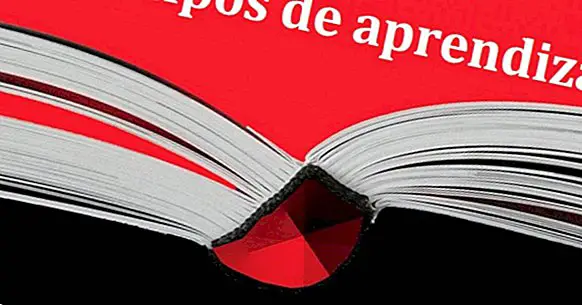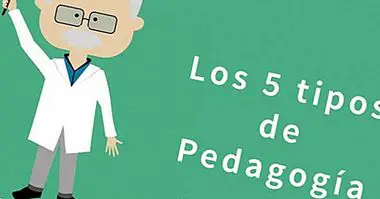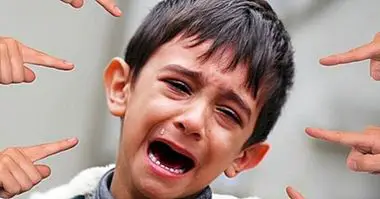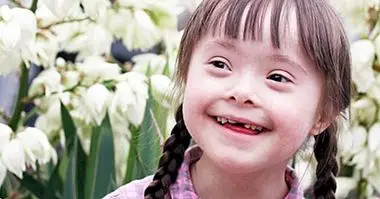The 13 types of learning: what are they?
Some people think that there is only one way to learn.
Surely, many, when we think about learning, we imagine someone studying or performing memory learning. But nevertheless, There are different types of learning with very different characteristics . In today's article, we will review and explain them.
Psychology and learning
Learning refers to the acquisition of knowledge, skills, values and attitudes , and human beings could not adapt to changes if it were not for this process.
Psychology has been interested in this phenomenon for several decades and many authors have contributed valuable knowledge about what is and how such learning is constructed. Ivan Pavlov, John Watson or Albert Bandura are clear examples of this marked interest.
If you are interested in knowing more about the contribution of psychology to learning, we recommend reading the following articles:
- Educational psychology: definition, concepts and theories
- The Theory of Learning by Jean Piaget
- The Sociocultural Theory of Lev Vygotsky
- Piaget vs Vygotsky: similarities and differences between their theories
The different types of learning
Over the years, the studies of many of these researchers have allowed us to decipher how our memory works and how observation or experience influences when it comes to building knowledge and changing our way of acting.
But, What ways of learning exist? What kinds of learning are there? Next we explain it to you.
- Recommended article: "Types of memory: how does memory store the human brain?"
1. Implicit learning
Implicit learning refers to a type of learning that is generally unintentional learning and where the apprentice is not aware of what is learned.
The result of this learning is the automatic execution of a motor behavior. The truth is that many of the things we learn happen without realizing, For example, talk or walk. Implicit learning was the first to exist and was key to our survival. We are always learning without realizing it.
2. Explicit learning
Explicit learning is characterized by the learner's intention to learn and is aware of what he learns .
For example, this type of learning allows us to acquire information about people, places and objects. That is why this way of learning requires sustained and selective attention of the most evolved area of our brain, that is, it requires the activation of the prefrontal lobes.
3. Associative learning
This is a process by which an individual learns the association between two stimuli or a stimulus and behavior . One of the great theorists of this type of learning was Ivan Pavlov, who devoted part of his life to the study of classical conditioning, a type of associative learning.
- You can learn more about this type of learning in our article: "Classical conditioning and its most important experiments"
4. Non-associative learning (habituation and sensitization)
Non-associative learning is a type of learning that is based on a change in our response to a stimulus that is presented continuously and repeatedly . For example. When someone lives near a disco, at first you may be upset by the noise. Over time, after prolonged exposure to this stimulus, you will not notice the noise pollution, as you will have become accustomed to the noise.
Within non-associative learning we find two phenomena: the habituation and the sensitization.
- To know more, visit our post: "Habituation: a key process in pre-associative learning"
5. Meaningful learning
This type of learning is characterized by the fact that the individual collects the information, selects it, organizes it and establishes relations with the knowledge that it previously had. . In other words, it is when a person relates the new information with the one he already has.
- You can learn more about meaningful learning by clicking here
6. Cooperative learning
Cooperative learning is a type of learning that allows each student to learn but not only, but with their classmates .
Therefore, it is usually carried out in the classrooms of many educational centers, and groups of students usually do not exceed five members. The teacher is the one who forms the groups and who guides them, directing the performance and distributing roles and functions.
7. Collaborative learning
Collaborative learning is similar to cooperative learning. Now, the first differs from the second in the degree of freedom with which the groups are constituted and work.
In this type of learning, It is the teachers or educators who propose a topic or problem and the students decide how to approach it
8. Emotional learning
Emotional learning means learning to know and manage emotions more efficiently . This learning brings many benefits mentally and psychologically, because it positively influences our well-being, improves interpersonal relationships, promotes personal development and empowers us.
- Recommended article: "The 10 benefits of emotional intelligence"
9. Observational learning
This type of learning is also known as vicarious learning, by imitation or modeling or , and is based on a social situation in which at least two individuals participate: the model (the person from whom it is learned) and the subject who performs the observation of said behavior, and learns it.
10. Experiential learning
Experiential learning is the learning that occurs as a result of experience , As its name indicates.
This is a very powerful way to learn. In fact, when we talk about learning mistakes, we are referring to the learning produced by the experience itself. However, experience can have different consequences for each individual, because not everyone will perceive the facts in the same way. What brings us from the simple experience to learning is self-reflection.
- Recommended article: "Personal Development: 5 reasons for self-reflection"
11. Learning by discovery
This learning refers to active learning , in which the person instead of learning the contents passively discovers, relates and reorders the concepts to adapt them to their cognitive scheme. One of the great theorists of this type of learning is Jerome Bruner.
12. Memory learning
The rote learning means learning and set in memory different concepts without understanding what they mean , so it does not perform a process of significance. It is a type of learning that takes place as a mechanical and repetitive action.
13. Receptive learning
With this type of learning called receptive learning the person receives the content that has to be internalized .
It is a type of imposed, passive learning. In the classroom it happens when the student, mainly because of the professor's explanation, the printed material or the audiovisual information, only needs to understand the content in order to reproduce it.
:



















